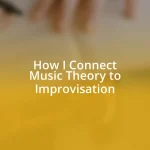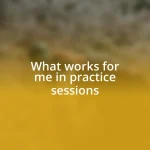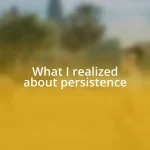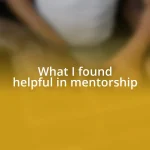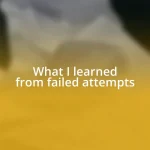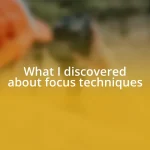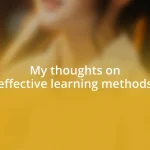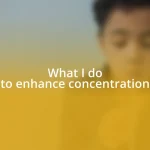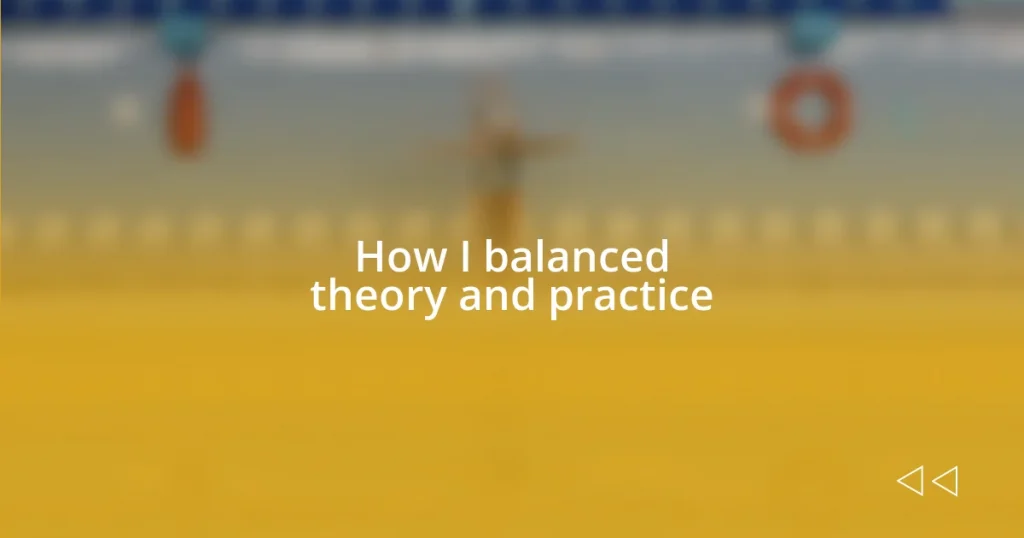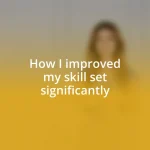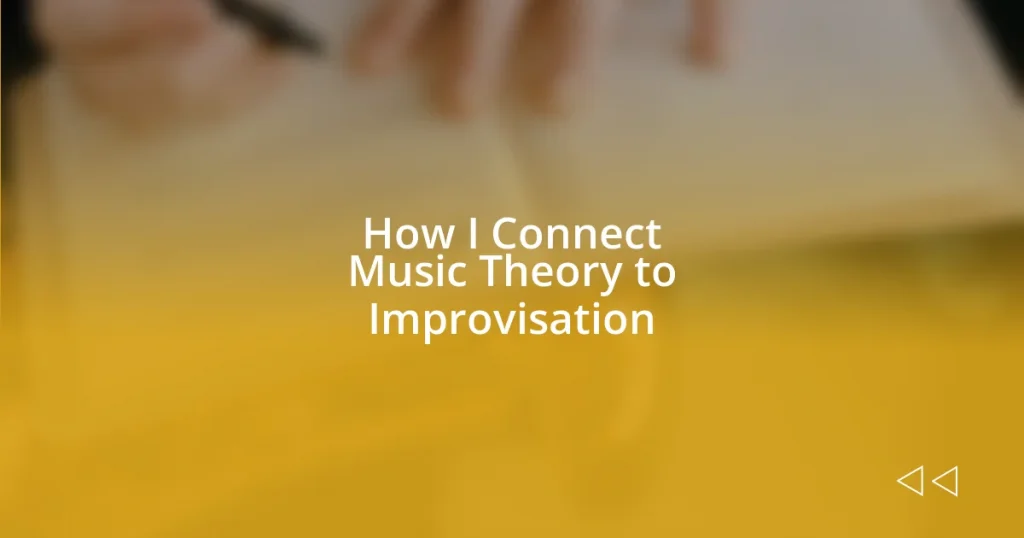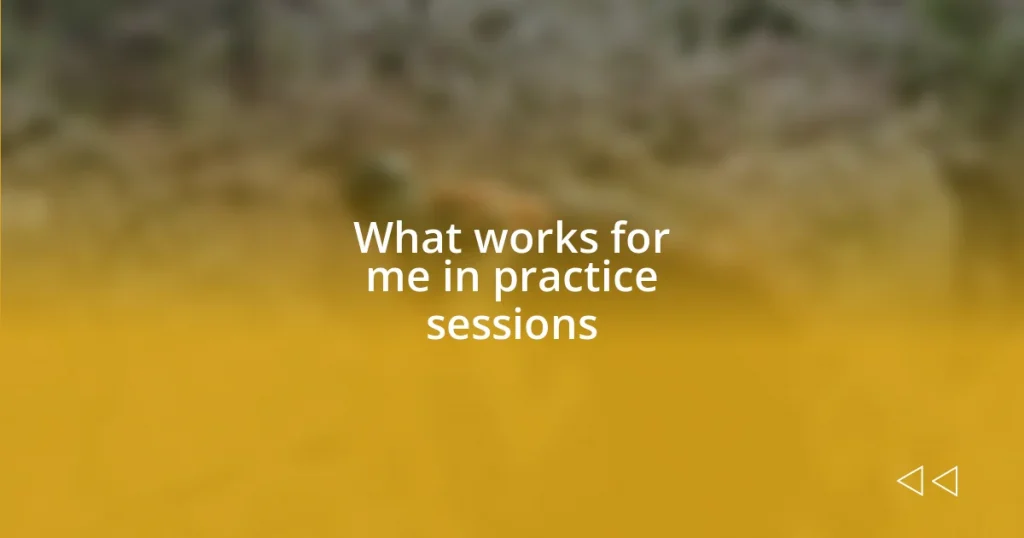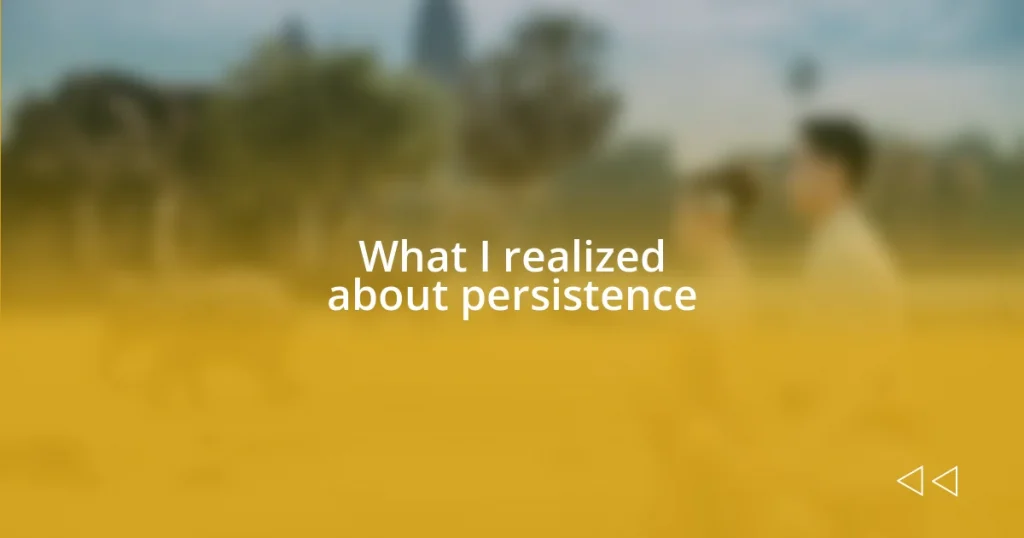Key takeaways:
- Theory and practice enhance each other; practical experiences help adapt theoretical frameworks to real-world applications.
- Establishing clear learning objectives boosts student engagement and allows for responsive adjustments based on feedback.
- Integrating real-world experiences and continuous feedback fosters critical thinking skills, enhancing students’ ownership of their learning journey.
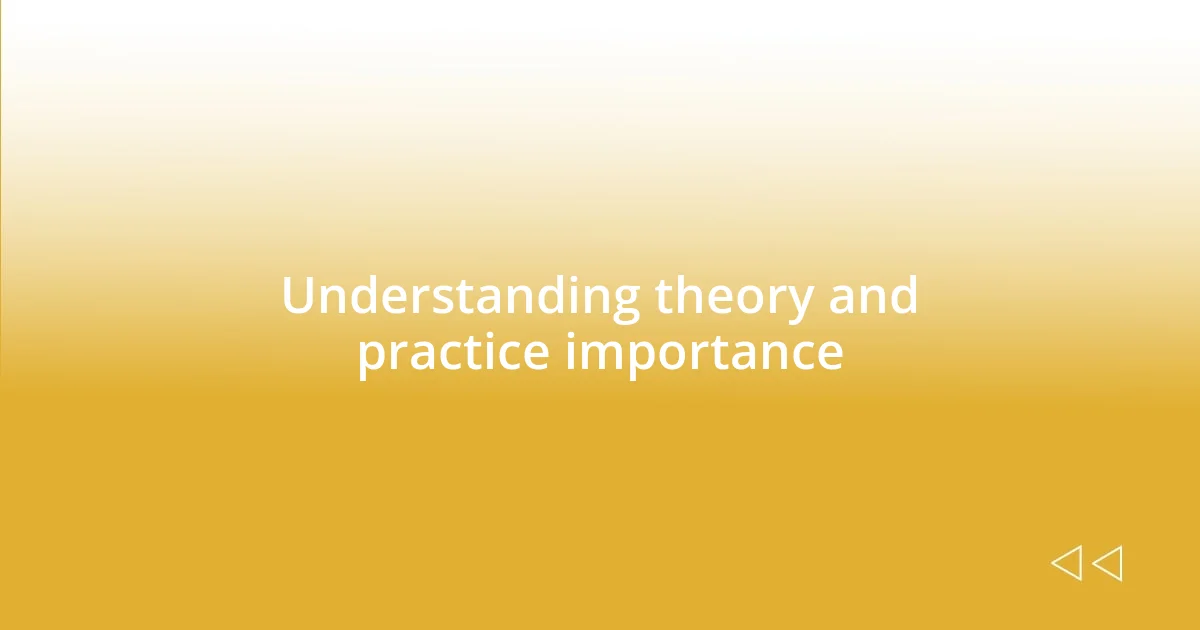
Understanding theory and practice importance
Theory and practice are like two sides of the same coin, each enhancing the other’s value. I remember a time during my initial teaching stint when I clung too tightly to theoretical frameworks. While they provided structure, I often felt lost in real classroom dynamics. Have you ever experienced that clash between textbook knowledge and actual experience?
The importance of theory lies in its ability to provide a foundation—a roadmap, if you will. For instance, I learned to appreciate behaviorist theories in psychology when I struggled to manage a diverse classroom. Understanding why students behave a certain way helped me tailor my approach effectively. Isn’t it fascinating how grasping these theories can transform our practical applications?
On the flip side, practice enriches theory by grounding it in reality. I recall testing a new teaching method I’d read about. It sounded great on paper, yet when I tried it, I quickly realized it didn’t resonate with my students. This experience taught me that theory must be adaptable, evolving through the lens of real-world feedback. How do you adapt theories in your practice?
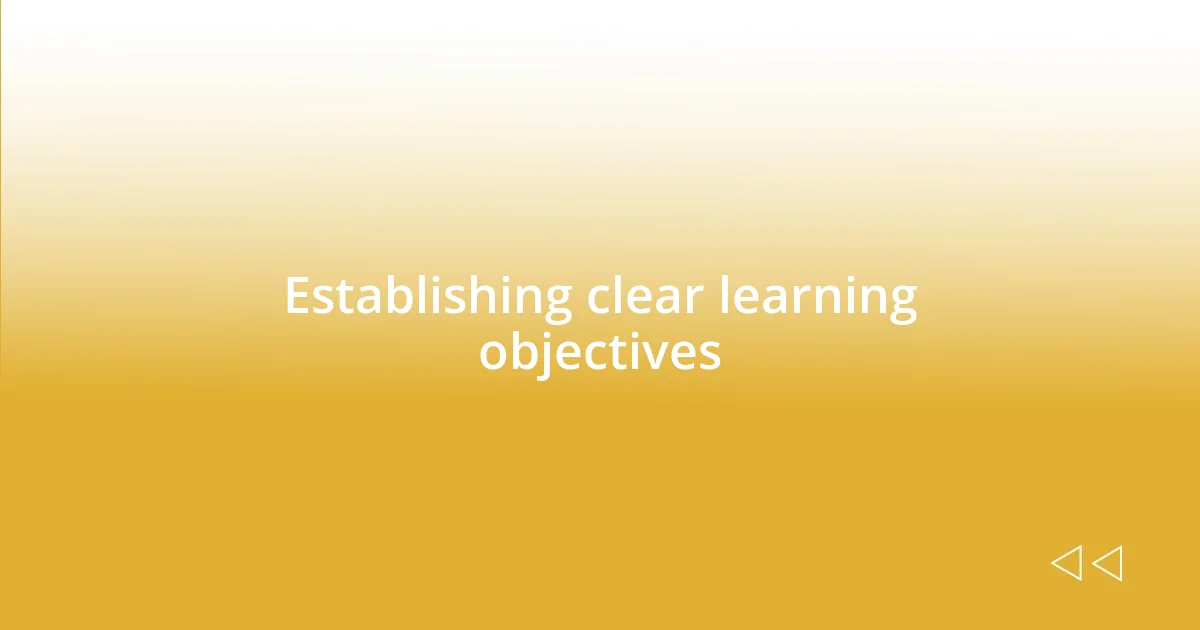
Establishing clear learning objectives
Establishing clear learning objectives is something I consider essential for both teaching and learning. I’ve found that well-defined objectives not only clarify what I aim to achieve but also guide students in understanding their own learning paths. For example, when I started a new unit, I’d often write down three clear objectives on the board. This simple act transformed how students approached the lesson. They seemed more focused and engaged, as if they were partners in the learning journey.
When I reflect on my experiences, I remember a time when I implemented a project-based learning approach. The objectives were specific: students would not only learn the theory behind scientific experiments but also apply it by conducting their own. I was amazed at how empowered they felt with that clarity of purpose. Have you ever witnessed the spark in students when they know exactly what is expected of them? It’s truly rewarding.
What I’ve discovered is that establishing clear learning objectives helps in assessing both student progress and my teaching effectiveness. They serve as a benchmark for understanding strengths and weaknesses in the curriculum. I recall an instance where I reviewed the objectives midway through a course and realized we needed to adjust based on student feedback. This responsive approach not only improved the engagement levels but also fostered a collaborative learning environment. How about you—do you find that revisiting objectives during a course can create a more dynamic classroom?
| Aspect | Details |
|---|---|
| Definition | Creating specific goals for learning outcomes. |
| Impact | Increases student engagement and clarity. |
| Adjustment | Allows for ongoing responsiveness to student needs. |
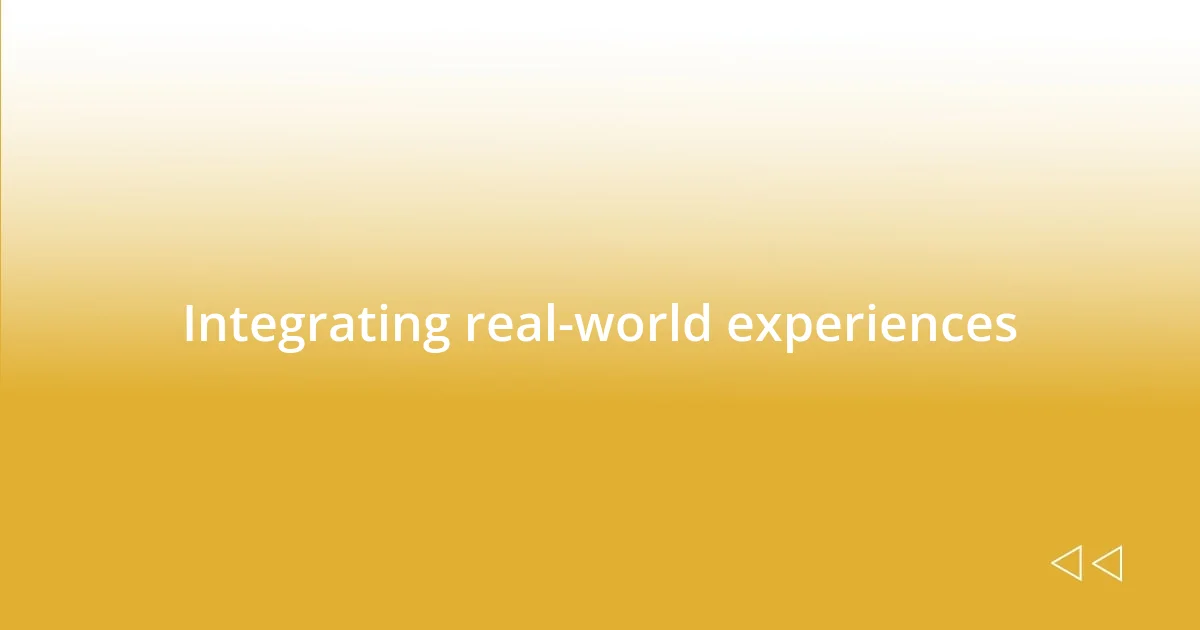
Integrating real-world experiences
Integrating real-world experiences into my teaching has been vital in bridging the gap between theoretical knowledge and practical application. I vividly remember an educational field trip I organized for my students. Watching them interact with real-world professionals brought the lesson on environmental science to life in a way that textbooks simply couldn’t match. It was in those moments, amidst outdoor activities and engaging discussions, that I saw students’ eyes light up with understanding—the kind of spark that makes you realize just how powerful integration can be.
- Field Trips: Offering experiences to see theories in action.
- Guest Speakers: Inviting industry professionals to share insights and stories.
- Real-World Projects: Assigning tasks that solve community issues, blending learning with tangible outcomes.
- Internships/Apprenticeships: Finding opportunities for students to gain hands-on experience relevant to their interests.
In moments like these, I find that students not only connect better with the subject matter, but they also develop a sense of ownership over their learning. Once, after a local park restoration project, one student expressed how their theories on ecology had transformed into a personal commitment to protect nature. That’s the magic of integrating real-world experiences—watching students grow and evolve as they see themselves reflected in their learning.
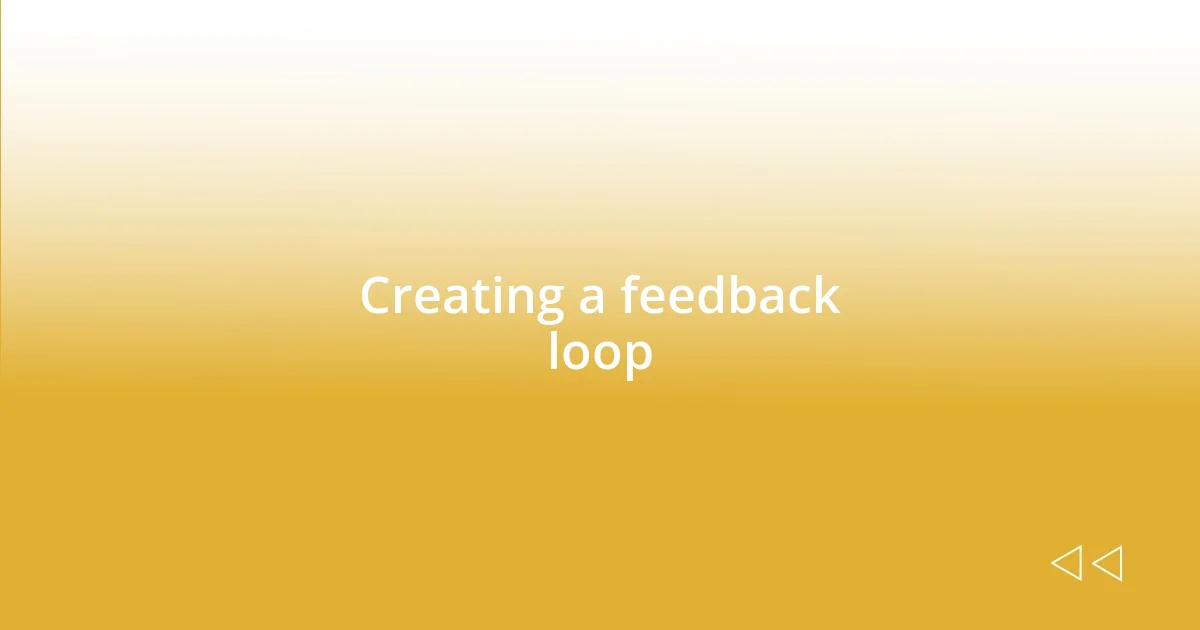
Creating a feedback loop
Creating a feedback loop is essential for fostering a culture of continuous improvement in the classroom. I remember my first experience with feedback—after a particularly intense lesson, I asked my students to share their thoughts in a quick survey. The responses were eye-opening; some felt lost while others craved more depth. This simple act of seeking input transformed my teaching approach, making me more aware of my students’ needs and learning styles.
As I implemented regular check-ins, I noticed a palpable change in classroom dynamics. I encouraged students to provide feedback not just on my teaching but also on each other’s work. It was incredible to see how they learned to articulate their thoughts and support one another, which enriched their learning experience. Have you ever seen a shy student blossom after receiving feedback? Those moments made it clear that peer assessment can be just as valuable as teacher evaluation.
I’ve found that this ongoing feedback process also allowed me to refine my objectives. For instance, after incorporating feedback from one semester, I adapted my lessons to include more hands-on activities, which addressed students’ requests for pragmatic approaches to learning. This responsiveness created an environment where students felt valued and heard. Isn’t it amazing how a simple loop of feedback can lead to transformation in both teaching and learning?
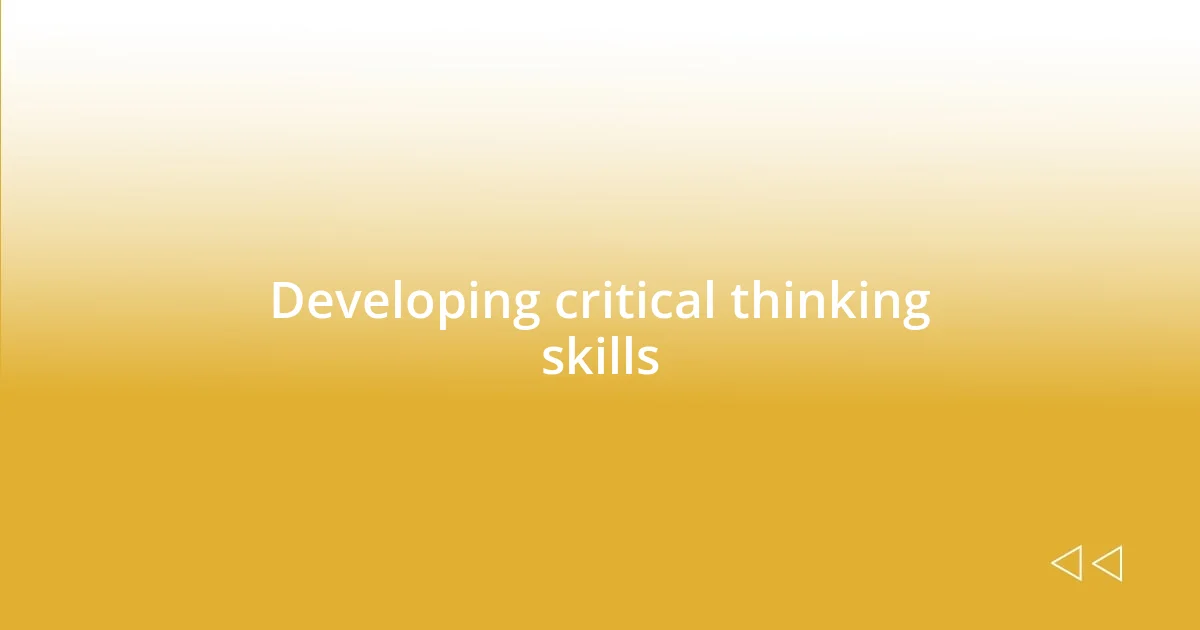
Developing critical thinking skills
Developing critical thinking skills in my students has always been a priority for me. I remember one project where I tasked them with analyzing a controversial topic. Instead of simply regurgitating information, I encouraged them to explore different perspectives. Watching them argue their points during class discussions was inspiring; I saw those critical thinking muscles being flexed, as they learned to dissect arguments and evaluate evidence.
One unforgettable moment happened during a debate on renewable energy. A student presented a well-structured argument, but what struck me was how they shifted their stance when presented with counterarguments. I realized then that critical thinking isn’t just about holding firm beliefs; it’s about being open to new ideas and adapting one’s viewpoint. Have you ever experienced the thrill of seeing a student connect the dots in their reasoning? It’s like witnessing a light bulb go off, illuminating their path to deeper understanding.
I’ve also found that encouraging curiosity plays a crucial role in developing these skills. When students ask questions like “why” or “how,” I see it as an opportunity to guide them toward reasoning and analysis. For instance, during a unit on economic theories, I encouraged them to ask, “How do these theories apply to our community?” The discussions that stemmed from those questions revealed not only their analytical capabilities but also a growing awareness of their surroundings, proving that critical thinking is as much about inquiry as it is about evaluation.
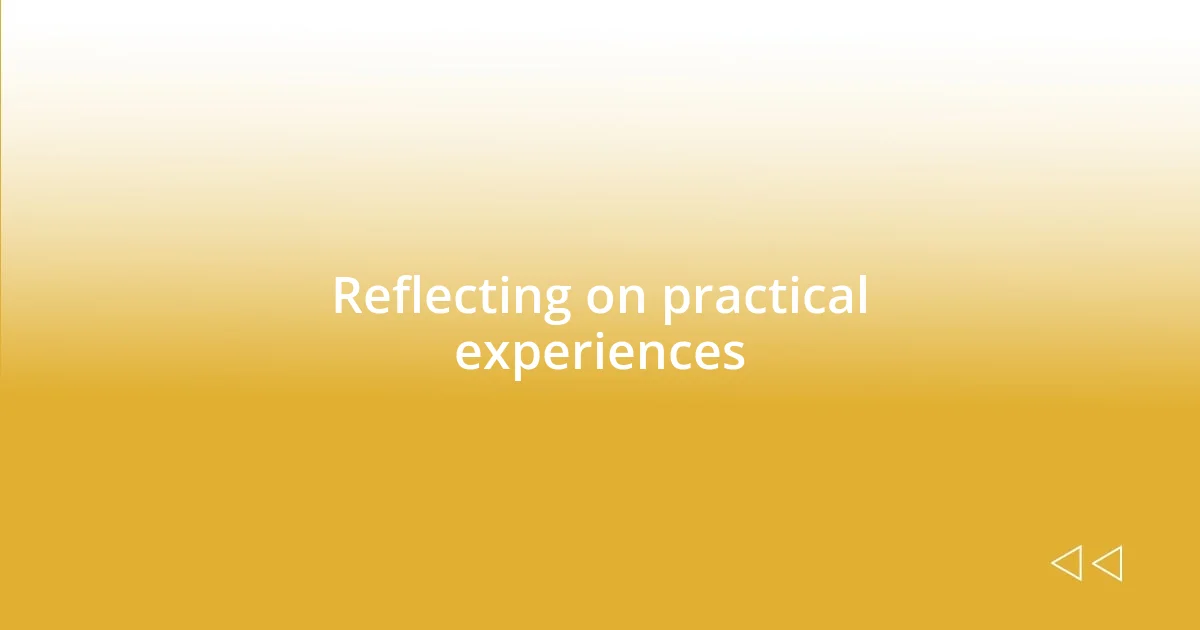
Reflecting on practical experiences
Reflecting on my practical experiences has been a transformative process that often uncovers valuable insights. When I took part in a community service project related to my subject area, I was surprised by how real-world applications brought my theoretical knowledge to life. Have you ever felt that rush of enlightenment while connecting the dots between what you’ve learned and what you see in action? It’s a powerful feeling that reaffirms my teaching methods.
One specific instance that stands out was when I organized a workshop where students applied statistical theories to actual sets of data from local issues. The energy in the room was palpable. I watched as their initial confusion turned into excitement as they navigated through the analysis. It reminded me that theory can sometimes feel abstract, but practice can breathe life into it, making it not just relevant but exhilarating for learners.
At the same time, I’ve also learned that reflecting on what didn’t work is equally important. After a particularly challenging lesson where students struggled to see the link between concepts and real-world applications, I took a step back. What went wrong? I found that my explanations were too complex and far removed from their experiences. By acknowledging this, I was able to reset and approach future lessons with a clearer, more relatable focus. Isn’t it fascinating how our missteps can guide us toward better teaching practices?
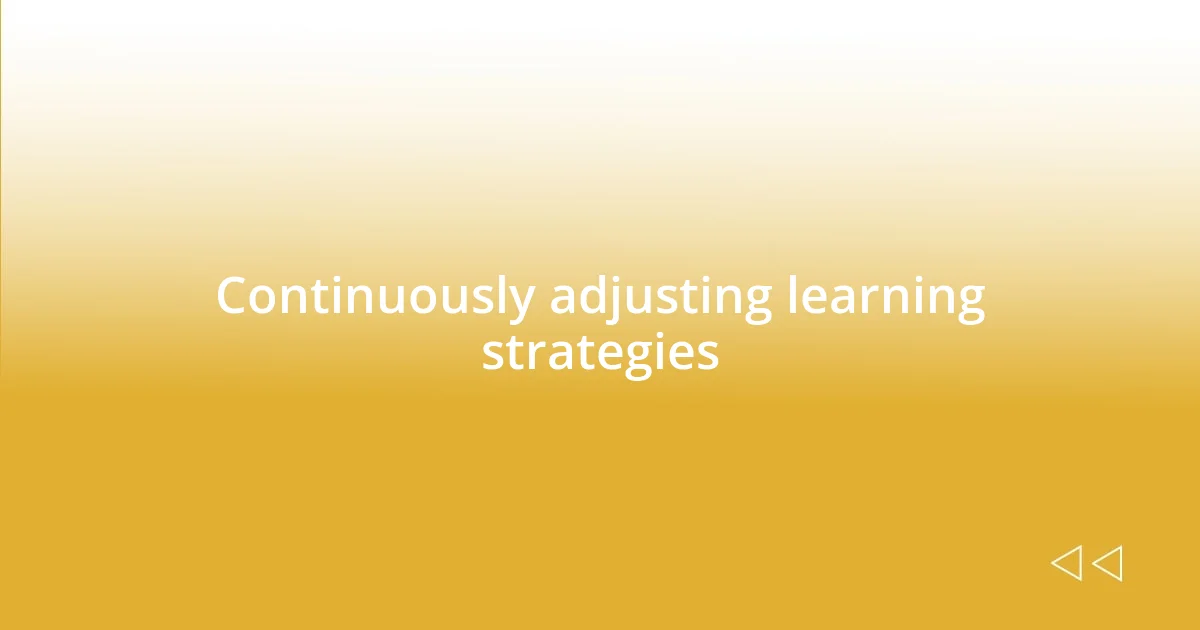
Continuously adjusting learning strategies
Continuously adjusting learning strategies has been essential in my teaching journey. I remember early on when I first introduced group projects. Initially, I noticed some groups flourished while others floundered. That disparity prompted me to adjust my strategy. I started implementing structured roles within each group, which not only helped those struggling but also empowered students to take ownership of their responsibilities. Have you ever seen a group transform when everyone has a clear purpose?
I also realized the importance of incorporating feedback loops. After every major assignment, I would ask students to share what worked and what didn’t. One semester, I received feedback that the pace of lessons was too fast for some learners. This insight provoked me to slow down and provide more interactive opportunities. It was enlightening to witness students engage more deeply with the material when I adjusted my approach to better meet their needs. Isn’t it incredible how a simple conversation can reshape an entire learning experience?
Finally, technology has played a significant role in how I adjust my learning strategies. During a hybrid learning model, I embraced digital tools that allowed for real-time quizzes and polls. I could gauge student understanding instantly and pivot my lessons accordingly. I remember one particular class when we used an interactive platform to assess their grasp of a complex concept. Student engagement shot up, and so did their comprehension. Reflecting on this, I realize that adapting to new tools not only enriches learning but also keeps the atmosphere dynamic and invigorated. Have you explored ways technology can enhance your teaching? I promise, the possibilities are endless!
